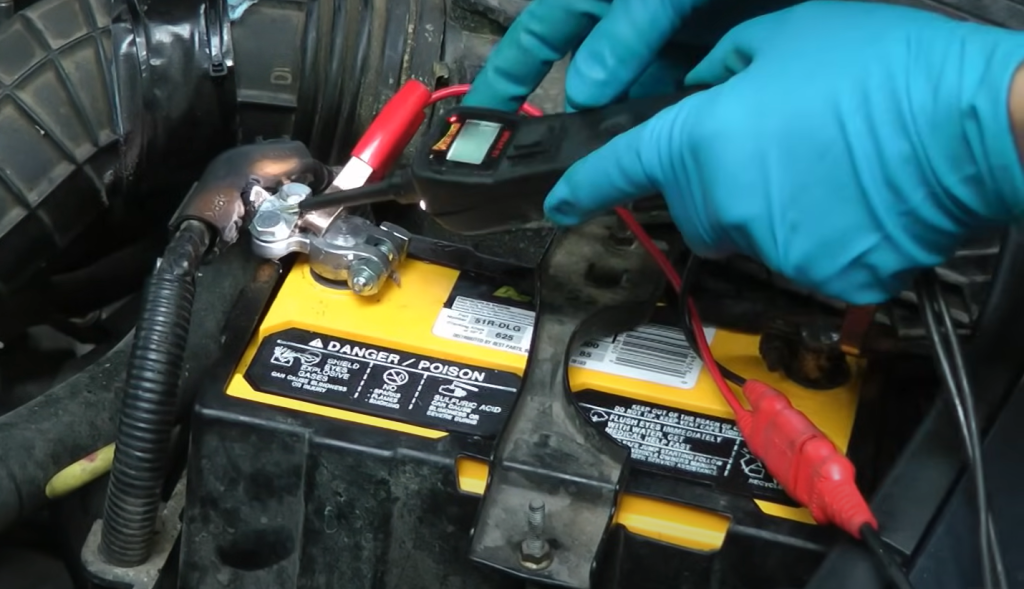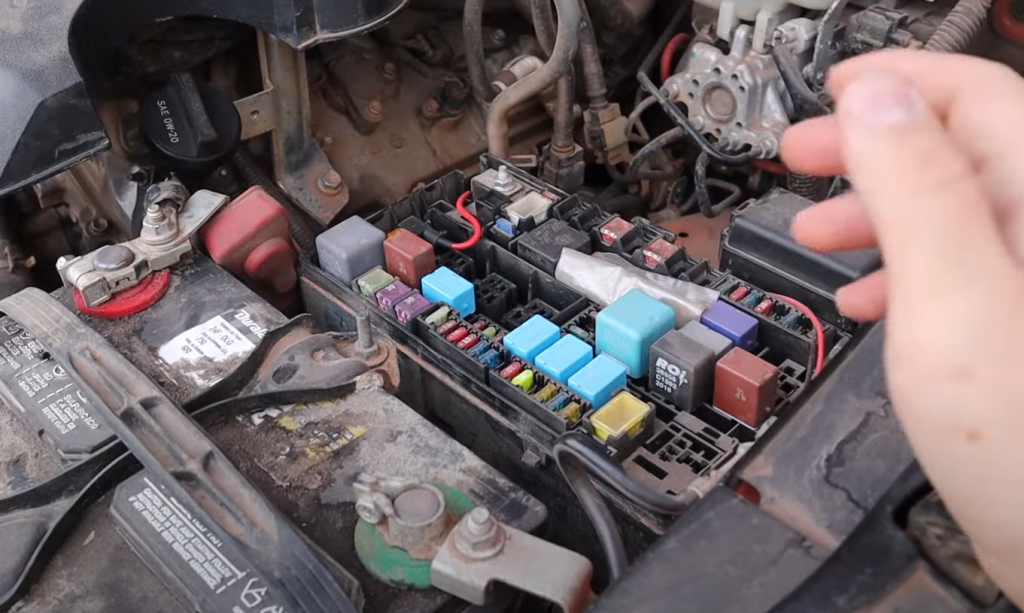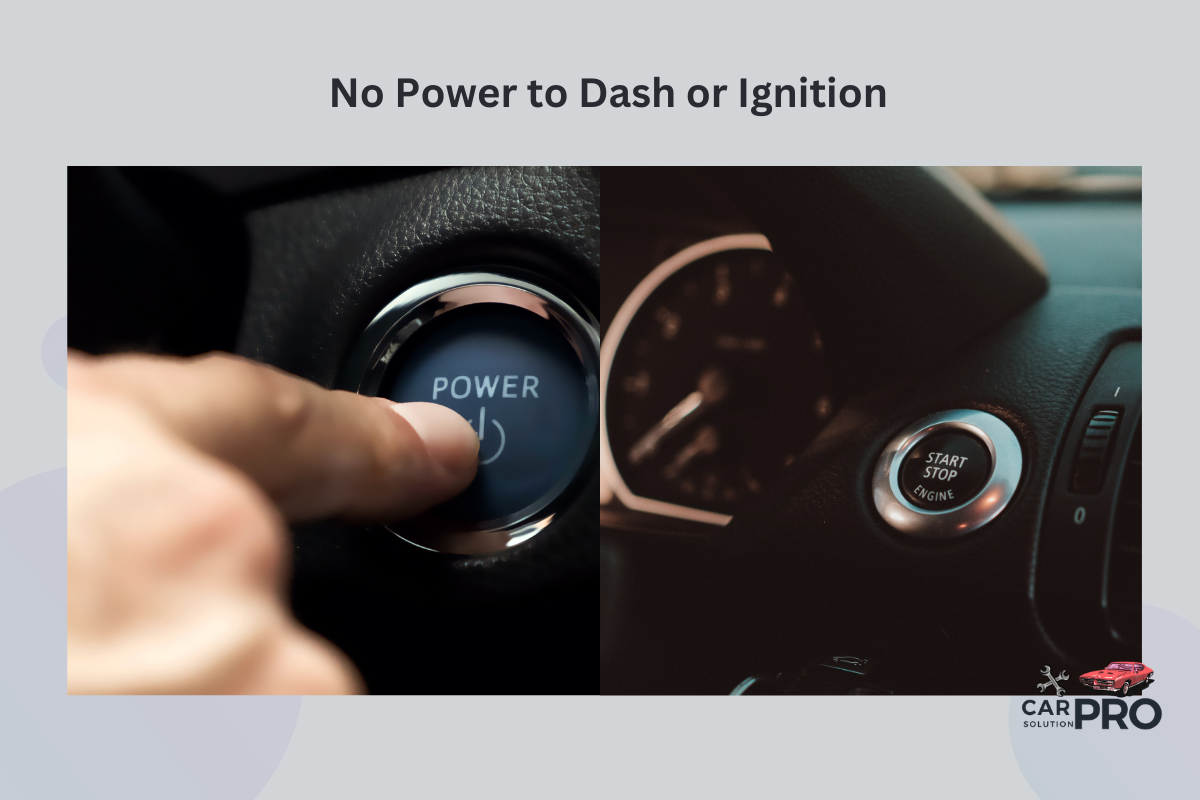You turn the key in your car’s ignition, but nothing happens. No lights on the dashboard, no sound from the engine. This frustrating scenario often points to electrical issues in your vehicle. A lack of power to the dash or ignition can stem from various problems, including a dead battery, blown fuse, or faulty ignition switch.
Identifying the root cause is crucial for getting your car back on the road. Common culprits range from simple fixes like a loose battery connection to more complex issues involving the alternator or wiring. Understanding these potential problems can help you diagnose the issue or communicate effectively with a mechanic.
Resolving electrical problems in your vehicle may require professional help, but some basic troubleshooting can save time and money. Checking the battery, inspecting fuses, and examining visible wiring for damage are good starting points for addressing a car with no power to the dash or ignition.
Key Takeaways
- No power to the dash or ignition often indicates an electrical issue in the vehicle.
- Common causes include battery problems, blown fuses, and faulty ignition switches.
- Basic troubleshooting can help identify the problem before seeking professional assistance.
Diagnosis of Electrical Issues
When your car’s dash or ignition lacks power, it’s crucial to diagnose the problem accurately. This process involves careful assessment, symptom identification, and the use of specialized tools.
Initial Assessment and Safety Precautions
Start by parking the vehicle in a safe area away from traffic. Turn off the engine and engage the parking brake. Put on safety glasses and gloves to protect yourself.
Open the hood and visually inspect the battery and connections. Look for signs of corrosion, loose cables, or physical damage.
Check the battery voltage using a multimeter. A healthy battery should read between 12.4 and 12.7 volts. If it’s below 12 volts, the battery may need charging or replacement.
Ensure all fuses are intact. Locate the fuse box and check each fuse related to the dash and ignition systems. Replace any blown fuses with the correct amperage.
Identifying Common Symptoms
No response when turning the key is a common sign of electrical issues. This could indicate a dead battery, faulty starter, or ignition switch problem.
Dim or flickering dashboard lights often point to a weak battery or alternator issues. Pay attention to any unusual sounds when attempting to start the car.
If some electrical components work while others don’t, it may suggest a wiring problem or blown fuse. Note which systems are affected and which are functioning normally.
Intermittent power loss to the dash or ignition could indicate loose connections or a failing ignition switch. Keep track of when and how often these issues occur.
Use of Diagnostic Tools
A multimeter is essential for testing voltage, continuity, and resistance in electrical circuits. Use it to check the battery, alternator, and various connections.
An OBD-II scanner can read error codes from the car’s computer. This tool helps identify specific issues within the electrical system.
A circuit tester can quickly check for power in fuses, relays, and wires. It’s useful for pinpointing breaks in the electrical system.
For more complex issues, consider using a power probe. This tool can safely apply power to components, helping diagnose faulty parts in the ignition or dash systems.
Battery and Connections
When your car has no power to the dash or ignition, the battery and its connections are often the culprits. A weak battery or loose cables can prevent electrical current from reaching important components.
Inspecting Battery Health

Start by checking the battery’s voltage using a multimeter. A healthy car battery should read between 12.4 and 12.7 volts when the engine is off. If it’s below 12.4 volts, the battery may need charging or replacement.
Look for signs of corrosion on the battery terminals. White, green, or blue buildup can interfere with the electrical connection. Clean corroded terminals with a wire brush and baking soda solution.
Check the battery’s age. Most car batteries last 3-5 years. If yours is older, it may be time for a new one.
Evaluating Cable Connections
Examine the battery cables for tightness and damage. Loose connections can cause intermittent power loss to the dash and ignition.
Wiggle the cable ends at the battery terminals. If they move, tighten them with a wrench. Look for frayed or exposed wires along the length of the cables.
Follow the positive and negative cables from the battery to where they connect to the car’s frame and engine. Ensure these connections are clean and tight.
Testing Ground Connections
Poor ground connections can cause electrical issues. Locate the main ground strap connecting the engine to the car’s frame.
Check that both ends of the ground strap are securely fastened. Clean any corrosion from the connection points with sandpaper.
Use a multimeter to test for continuity between the negative battery terminal and various metal parts of the engine and frame. A good ground should show near-zero resistance.
If you find high resistance, clean the ground connections or replace the ground strap. This can often restore power to the dash and ignition.
Ignition Switch Failures
Ignition switch failures can leave your car without power to the dash or ignition. These issues often stem from wear and tear or electrical problems.
Identifying Ignition Switch Malfunctions
Ignition switch issues can manifest in several ways. A common sign is difficulty turning the key in the ignition. The key may feel stuck or require excessive force to turn.
Another indicator is intermittent power loss to the dash or accessories. This can happen while driving or when starting the vehicle.
Unusual clicking sounds when turning the key might also point to a faulty ignition switch. In some cases, the engine may start but immediately shut off.
To test the switch, try turning on the headlights. If they work but the dash remains dark, the ignition switch could be the culprit.
Replacement Procedures
Replacing an ignition switch requires care and precision. First, disconnect the car’s battery to prevent electrical shorts.
Next, remove the steering column covers to access the switch. This may involve unscrewing several bolts or clips.
Locate the ignition switch and disconnect its wiring harness. Remove any mounting screws holding the switch in place.
Install the new switch by reversing these steps. Ensure all connections are secure and the switch is properly aligned.
After installation, reconnect the battery and test the new switch. Check that all dash lights and accessories function correctly.
Professional installation may be necessary for complex ignition systems or if the repair involves steering column components.
Fuse and Relay Analysis
Fuses and relays play a crucial role in protecting and controlling a vehicle’s electrical system. When there’s no power to the dash or ignition, these components are often the first places to check.
Locating Relevant Fuses
Fuses regulate the flow of electricity to various parts of the vehicle. The fuse box is typically found under the dashboard or in the engine compartment.
To find the right fuses:
- Consult the owner’s manual for fuse box locations
- Look for a diagram inside the fuse box cover
- Check fuses related to the ignition, dashboard, and main power
Some common fuses to inspect include:
- Main fuse
- Ignition fuse
- Instrument cluster fuse
- Battery fuse
Testing and Replacing Fuses

A visual inspection can often reveal a blown fuse. Look for a broken metal strip inside the fuse or signs of discoloration.
To test a fuse:
- Remove the fuse carefully using fuse pullers
- Use a multimeter set to continuity mode
- Touch the probes to each end of the fuse
- A working fuse will show continuity
If a fuse is blown, replace it with one of the same amperage rating. Never use a higher-rated fuse as it can cause electrical damage.
Evaluating Relay Functionality
Relays act as switches for high-current electrical circuits. A faulty relay can cause ignition problems.
To check a relay:
- Locate the relay using the vehicle’s manual
- Remove the relay and inspect for visible damage
- Shake the relay gently – rattling may indicate internal failure
- Use a multimeter to test relay coil resistance
If a relay is faulty, replace it with an exact match for your vehicle model. Incorrect relays can lead to electrical issues or safety hazards.
Wiring and Electrical Components
Wiring issues and damaged electrical parts can stop power from reaching your car’s dash and ignition. These problems can be tricky to spot but are key to fixing the issue.
Troubleshooting Wiring Issues
Wiring problems can break the electrical circuit in your car. Loose or corroded connections often cause this. Check all wires and connections to the battery, fuse box, and ignition switch.
Look for frayed wires or signs of damage. Rodents sometimes chew on wires, causing shorts. Test connections with a multimeter to find breaks in the circuit.
Pay extra attention to ground wires. Bad grounds can stop power from flowing correctly. Clean any rusty or dirty ground points.
Assessing Damage to Electrical Components
Faulty electrical parts can also cut power to the dash and ignition. The ignition switch is a common culprit. If it fails, it won’t send power to other systems.
Check the starter and alternator too. A bad starter won’t turn the engine over. A faulty alternator might not charge the battery properly.
Test these parts with a multimeter or have a mechanic check them. Replace any damaged components with new ones to restore power.
Don’t forget about fuses. A blown fuse can stop power from reaching important systems. Check your car’s fuse box and replace any burnt-out fuses.
Frequently Asked Questions
Car electrical issues can be frustrating. Problems with the dashboard or ignition often stem from the battery, alternator, or wiring. Troubleshooting these problems requires checking multiple components.
Why do my dash lights not turn on even though my car battery is fully charged?
Faulty wiring or a blown fuse can prevent dash lights from turning on. The ignition switch may also be malfunctioning. A professional mechanic can diagnose the exact cause.
What could cause my car to not start and also have no power to the dashboard?
A dead battery or disconnected battery cables are common culprits. The alternator could also be failing to charge the battery properly. Checking these components is a good starting point.
Why does turning the key in the ignition do nothing in my vehicle?
A faulty ignition switch can prevent the car from starting. The starter motor may also be defective. In some cases, a security system malfunction can disable the ignition.
What are common reasons for a car to exhibit no power to the dash and ignition?
Electrical issues like a blown fuse or fusible link are frequent causes. A faulty alternator or corroded battery terminals can also lead to this problem. Wiring problems may disrupt power flow to these systems.
How can I troubleshoot a vehicle that is not starting, given that the battery is not the issue?
Check the starter motor and ignition switch. Inspect fuses and relays related to the ignition system. Listen for clicking sounds when turning the key, which may indicate a starter problem.
What should I check if my car’s dashboard shows no lights and the ignition won’t engage?
Examine the battery connections for corrosion or looseness. Test the alternator output. Inspect fuses, especially those related to the instrument cluster and ignition. The ignition switch may need replacement if these checks reveal no issues.


